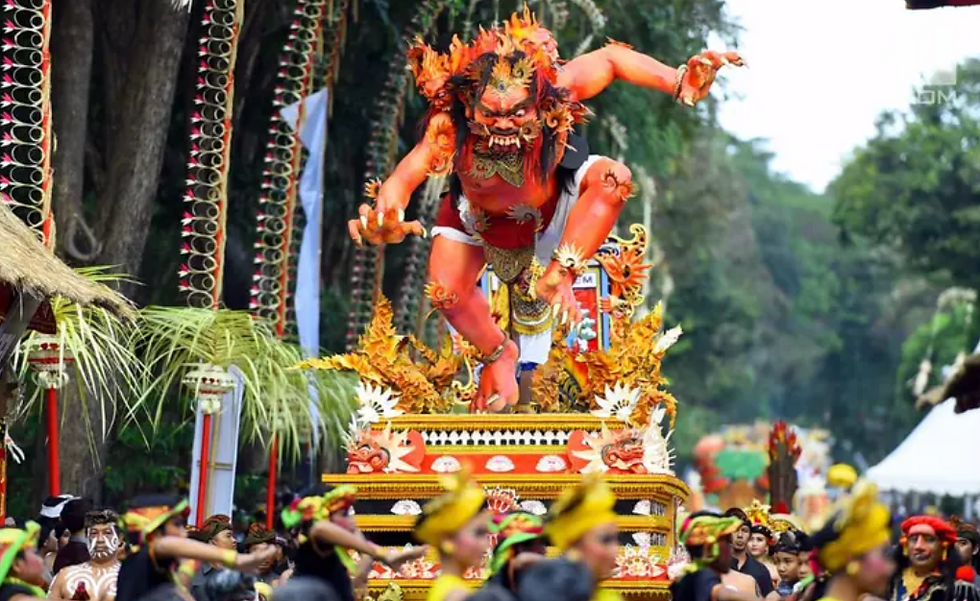Bali Cons: Wild Animal Tourism
- Pepita Maiden
- Jul 11, 2023
- 4 min read
Updated: Nov 25, 2025

We recently had an inquiry from a visitor asking about seeing Orangutan and Elephants in Bali. I had to inform the lady that neither animal is native to the island so they would not be getting a real Bali experience. She hadn't realised and happily decided on other activities.
Animal tourism and 'entertainment' may not be actually cruel in some circumstances, but it's almost never completely benign.
In June 2023, the World Animal Protection organisation released a report on their latest investigation into conditions at animal tourism venues in Bali and Lombok.
What is upsetting about the latest report is that after an investigation of 26 tourism venues, NONE met good welfare standards for animals in captivity, and nearly all did not even meet the most basic needs of the animals in their care.
Furthermore, while some venues were closed during the pandemic, and there are fewer elephants and tigers overall, there was no meaningful improvement in the welfare conditions for wildlife 'entertainment' in the 5 years since the last report.
IMPORTANT NOTE: The WPA is a western organisation with western values; standards are different than for the Indonesians in general. Some on the list aren't breeding the animals in captivity, and many animals are well housed, fed and watered. As is often the case; use your intuition. If a wild animal looks too fat or thin, tired or distressed, or their enclosures are small and dirty: leave, let me know and tell others not to go there.
There is an extra moral issue here...without the tourist trade these venues can't pay their staff and often can't feed their animals. However if tourists stop going to the worst of these places, they hopefully find another way to attract tourists!
So what sort of animal tourism is being advertised in Bali and which ones should you avoid?
Elephant riding and bathing: Elephants are imported to Bali specifically for tourism, most venues are actively pursuing captive elephant breeding and none are trying to reintroduce elephants to the wild. Elephants are also not meant to be ridden by fat westerners. Of course there are few regions where it's safe for elephants to go, so we have a catch 22. If you want to go to one of the elephant tourism spots in Bali, it will help house and feed these beautiful animals. If you want the riding experience, make sure the elephants aren't working more than 1-2 hours a day and have a clean and large enclosure.

Dolphins in captivity: Around 9 dolphins are in captivity at the Bali Exotic Marine Park in inadequate conditions. They claim to be involved in education and conservation but do you really don't need to see captive dolphins swimming in shallow pools?
Primates: Having lunch with an orangutan sounds fun, but they don't want to have lunch with you. There are better ways to see primates in the wild elsewhere in Indonesia. There is a link below to read our article about seeing orangutans in the wild in Borneo or Sumatra.
Tigers: Brave boy, taking a selfie with a drugged tiger - I hope you enjoyed your session, the tiger didn't! Some of the better zoos around the world carry out important Tiger breeding programs. If you can't get to India to see tigers in the wild, check the welfare scores of your local zoo and do some research on their welfare before going. Tigers are not endemic to Bali (the Balinese tiger died out decades ago) and feeding them here is not a cultural experience.
Turtles: The turtle venues on 'turtle island' in Benoa allows tourists to handle the baby turtles before they are released. This is not a great idea. However the two conservation and education centres, TCEC and Saba Asri, are focused on rescue and rehabilitation doesn't allow handling except at release time. These allow you to see the baby turtles and contribute more directly to their conservation. They aren't perfect, but it's okay and this is important work.
Luwak: See our article about the Luwak here. In general, you are going to see caged Luwak (civet cats) in coffee plantations all over central and northern Bali. The plantations are important for the Bali economy, the civet coffee is not. My suggestions is to go to a plantation (they are all similar) but don't buy coffee luwak and strongly verbalise your distaste for caged luwak to everyone. It won't make much of a difference but another tourist may also not buy the coffee luwak and then inform others.
Animal handlers on the side of the road: These are particularly distasteful; some greasy tout with a thirsty python, overfed owl, or chained lizard standing near lookouts offering for you to take a photo with their captive animal for a fee. Don't do it, it's grotesque.
Wild Dolphins: In Lovina, you can take a fun boat ride early in the morning and see the dolphins in the wild. Sounds nice? It did to me too until I realised that there were dozens of boats chasing the poor things everyday. If dolphins make an appearance near your boat then great for you, but don't go chasing them! This is the same for the manta in Nusa Penida, and sea turtles all over the Bali snorkelling sites. I can't tell you not to do this, as I have done it myself, but be aware and don't touch the wild animals, just observe.
Macaques: The same advice above goes for the monkeys in Ubud Monkey Forest, Sangeh Monkey Forest, Uluwatu Temple and a couple of other areas around Bali. View the monkeys, take pictures - they are cute and funny - but don't try to touch them and certainly don't feed them. The WAP are mostly concerned about the sheer numbers of tourists in these places.
You can read the full WAP report here.




Comments